Porter Cable 7424XP Assembly and Review
by Ivan RajicI have been using the Porter Cable Random Orbital Buffers ever since I first got into detailing over seven, maybe eight, years ago. It was THE machine to have and it was extremely easy to use. Now, we have all heard how great the Porter Cable 7424XP Random Orbital Buffer (PCXP) performs and how easy it is to use, but a few weeks ago I started thinking about it a different way. After looking over all my detailing supplies one day mid August, cleaning, counting, etc., I thought back to the days when I was first buying tools and products. I thought about how much money I had already spent, how much I was still going to spend, and how many headaches I went through figuring out not only what to order, but also how to use it. The PC came up while thinking about this stuff since I had an impossible time figuring out which backing plates to purchase, which counterweight to install and how to best utilize this great machine (back then it was the PC 7424).
Thus this article… I wanted to go over the basics, the 1+1=2, the baby steps to using your first polishing machine… No, my intention is not to insult the intelligence of every quality detailer and knowledgeable enthusiast out there :), rather to hopefully help that one lost soul that might be searching the web with these simple questions, as I once did.
First off, here’s a photo of what you get with the PCXP order:
As you can see, mine is a bit “customized” and is showing its age, but still runs as good as new after about two years of fairly heavy use. The polisher comes with a white pad permanently attached to a backing plate, a side handle and a wrench. I have tried out the white pad that comes with the PCXP and while it does a fine job, something along the lines of a Lake Country white pad, I never liked using it and prefer to utilize the versatility of the PC by using different sized pads and backing plates. The tape you see around the polisher head is there just in case I come across an “oops” during detailing. I’d rather be hitting paint with painters tape than bare metal, as I’m sure anyone else would. I can’t remember if I picked this up from another detailer or just did it myself, but it’s common sense either way and something I’d highly recommend. The tape around the power plug is leftover tape from taping the PCXP cord to an extension cord many, many times.
Looking closer at the PCXP, we find the counterweight and threaded female end that allows the use of many different sizes of backing plates and, with that, different sized pads.
As you can see in the photo, it says to use 5 inch pads only. This would be the “5 inch counterweight”. There’s also a Porter Cable 6 inch Counterweight available through Detailed Image. Since I mostly use the PCXP with 4 inch pads (sometimes also with 5.5” pads) I never found a need to even try the 6 inch counterweight. Also, I did try both counterweights a while back with the older Porter Cable polisher, and I couldn’t tell much of a difference when using the 5 or 6 inch counterweight with 6.5 inch pads. Another reason I never personally looked into the 6 inch counterweight. That said, I would definitely suggest picking up both as it’s only an extra $5 and you can see what best fits your style of detailing.
Moving on… once you have everything together, you need to put it all together. Since the threaded end rotates freely, it’s better to put the wrench on it before screwing in the backing plate.
Next the backing plate goes in. It screws into the threaded end fairly easily…
The backing plate should be tightened fairly well, but there’s no need to overdo it since the spinning action of the polisher would theoretically keep it from ever coming off.
Next, the side handle goes in. The handle can be threaded into either side of the polisher, which is extremely helpful not only for users that have a preferred hand, but also for using the polisher with the handle on different parts of a vehicle.
The handle simply screws into the side and shouldn’t be tightened too much. I’ve had a few handles on different polishers fail due to over tightening. Whichever way the bolt is attached to the handle (some are melted within the handle plastic while others are glued to a groove inside the hollow part of the handle), over time it can fail due to the stress from over tightening. So it’s better to lightly tighten it every few polishing sessions than break it within a few months!
And that just about covers the very simple assembly guide of a PCXP. Here you can see the polisher completely assembled and ready for action.
Now that the simple stuff is out of the way, here’s a bit about how I like to utilize the PCXP. First off, here’s what I use with the polisher, as well as what I’d recommend for any enthusiast detailers when ordering a polishing package:
- Porter Cable 7424XP Random Orbital Buffer(with wrench)
- Lake Country 5 inch Backing Plate
- Lake Country Backing Plate for 4 inch pads
I personally don’t like to use the handle with the PC as I feel it vibrates way too much (I mean that the handle vibrates, not the machine due to the handle being used), so I keep it off. Also, since I use the PCXP mostly with 4 inch pads, there’s really no need to utilize a handle in my situation. As I mentioned above, the white pad that comes with the PC simply sits in a garage drawer, so it’s never used.
The stuff I do use a lot is the 4 inch backing plate and, when needed, the 5 inch backing plate with larger pads. As you can see in the photos, I like to mark the backing plates with a permanent marker. This is done to ensure that I know the pad is spinning and how fast it’s spinning. In certain situations the PC doesn’t have enough rotational force to spin the pad, so it helps to know when it stops spinning and revise the plan of attack for that, usually small, section.
Well that brings me to the end of my mission for this little article. As simple as it is to assemble the PCXP, I hope this article does answer a question someone may have while reading the blog and I hope readers take something away from it.
As always, thanks very much for reading and hope you enjoyed it!
Ivan Rajic


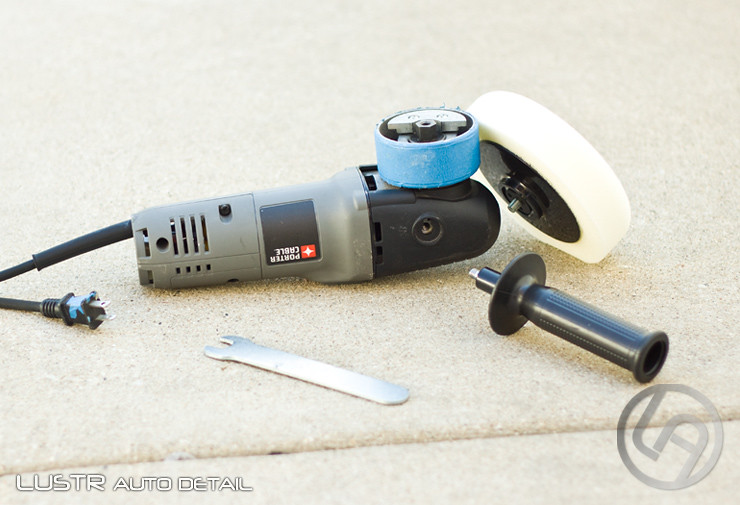
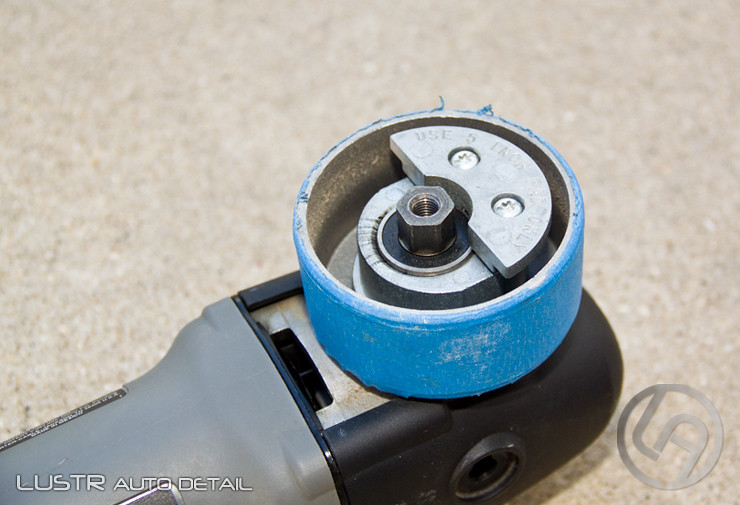
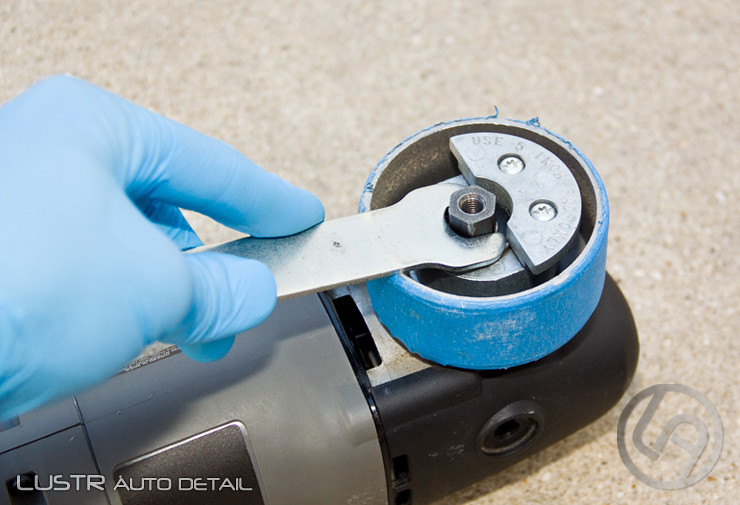
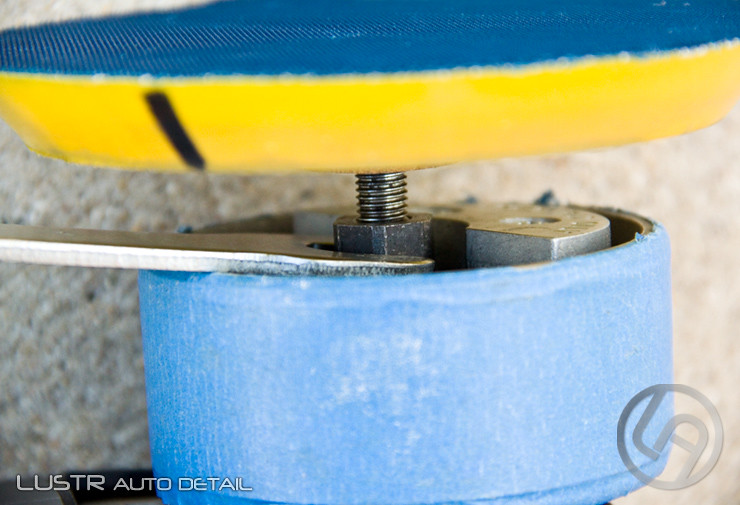
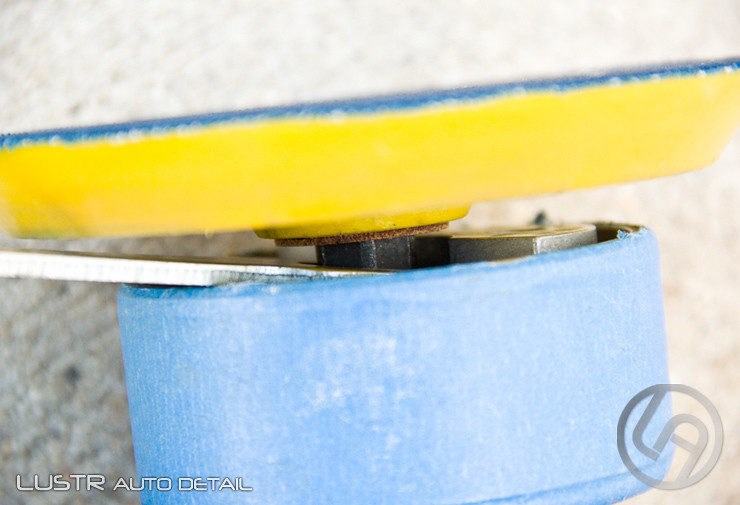


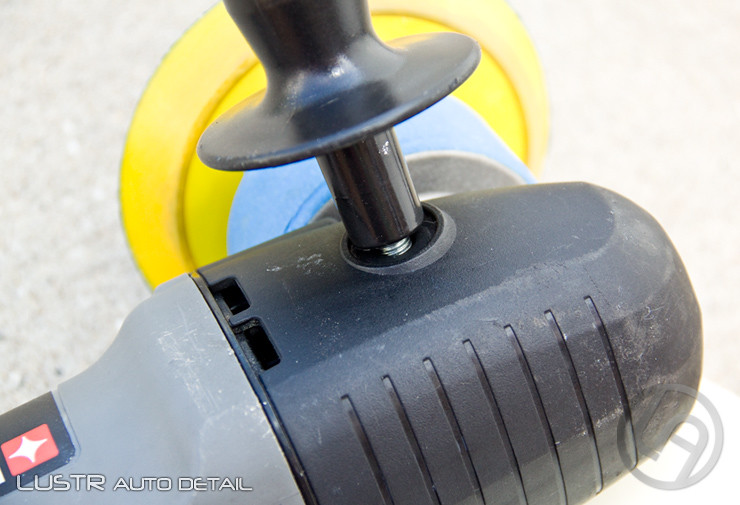
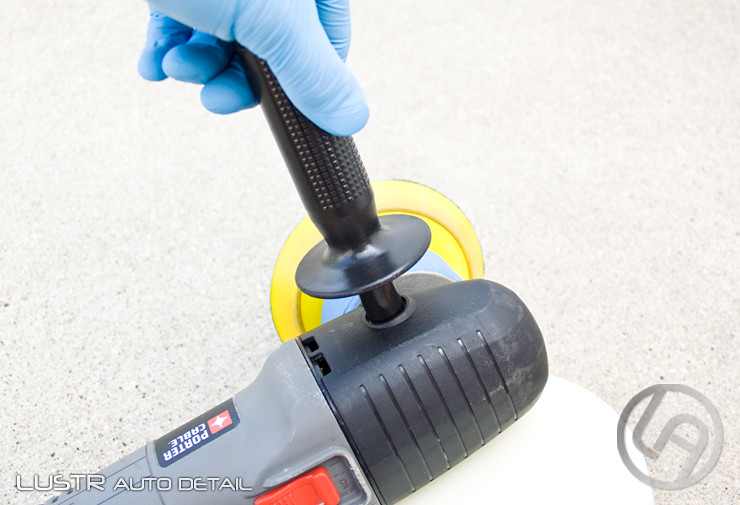
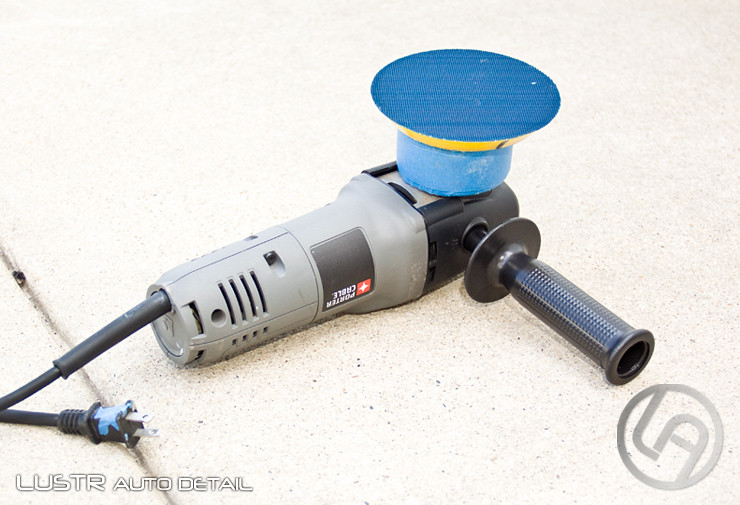
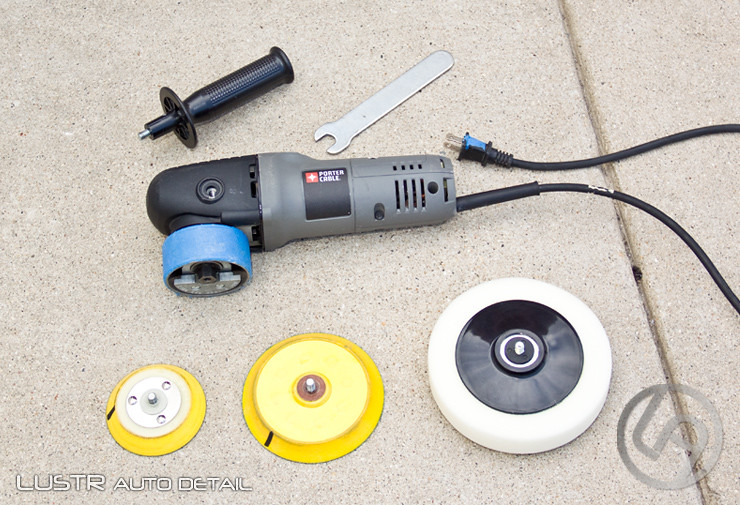








Great idea with the blue painters tape, I’ll have to do the same to mine.
Definitely a good idea Brian. I’ve been doing it on all machines I own for a very long time now.
For the love of God, thank you for this article.
Much like you were, being someone trying to figure out which direction is up and if they sky is really blue or not (Read; trying to compile and finalize my list of what I want/need, should get, can skip for now etc) these articles are beyond helpful.
So thank you.
Glad it helped Matt. Thanks for the kind words!
Good stuff.
I wanted to ask why you use the 4″ pads so much? I almost use them exclusively too but want to hear why you prefer them.
Tim
Thanks Tim,
I use the 4″ pads almost solely with the PC, sometimes with the rotary, on all the smaller areas on the vehicle. Stuff like pillars, areas at top of windshield on convertibles, small bumper areas, some side skirts, etc. etc.
In short, what I meant is that I use the 4″ pads almost all the time with the PC, but I do use the Flex XC3401 for the majority of a detail job. With the PC, I also use the Meguiar’s microfiber 3″ pads quite a lot in tandem with the 4″ foam and Surbuf pads. With the Flex, I use 5.5″ pads solely… can’t remember the time I put a larger pad on there.
I hope that answers your question Tim.
Thanks,
Ivan
Great article Ivan…thanks for sharing with everybody!
Ivan,
Good article. I have the original PC.In your opinion would it be worth it for me to upgrade to the newer 7424XP (and maybe set up the original for 4″ pads) or is the difference too small ? Should I instead think about the Flex random orbital as a step up ?
Thanks,
Bob
Thanks Bob.
To answer your question… I would definitely recommend the Flex XC3401 if you are looking to step up. It’s a much different machine and is definitely the one to have if you had to have just one machine. It does great correction work due to the forced rotation but also finishes down great on all paints.
As far as the new vs old PC goes, it’s definitely a better machine in my experience. It feels better, works better and overall is built better. I would easily recommend getting the new one and leaving the old as a spare and/or for 4″ pads, but since you asked to which machine you should step up, I have to say Flex takes the cake.
Hope that helps,
Ivan
Ivan,
Thanks for your input.
Bob
Thanks for your response Ivan. I’m glad you went into extra detail about the other machines and pads. I have a Flex and I didn’t know which Microfiber pads I should get. I’ll probably end up with both.
i was wondering if i was the only one who had a problem with mine coming unplugged! great article by the way
Very helpful article Ivan!
Question: I will be buying a Porter-Cable 7424 XP soon for the first time and noted that you mentioned that you primarily use 4″ pads, as opposed to the 5.5″ and 6.5 pads” one sees in countless on-line ‘how-to’ videos from various other auto detailing internet retailers. What attributes do the 4″ pads hold for you; why do you use them instead of their larger brothers? Any particular backing pads or pad brands you especially like?
Thanks Mark!
You might have misunderstood me. I use my PC mostly with 4″ pads instead of larger pads because I use my Flex XC3401 a big majority of the time while detailing, so I use the 5.5″ pads with that machine. Way back in the day when I only had a PC and started doing polishing, I would use it with all sizes of pads, from 3″ to 6.5″.
From my experience, you can get pretty much anything done with 5.5″ and 4″ pads with a PC, especially with the newer microfiber pads and newer polish technologies.
As for backing plates, I use both Meguiar’s and Lake Country backing plates. No preference really, just whatever works with specific pads.
Hope that helps!
Ivan
After reading this and assembling my new 7424XP, I decided to wrap the shank in black electrical tape. If I have an oops incident, I will feel more comfort with a plastic rubbery material. Awesome article!
Thanks Jon! Let us know how the electrical tape works out. I haven’t tried that tape yet so I’m interested in finding out how it compares to the tape I usually use.
Ivan
I got lucky with my first detail job and did not bump the chuck – so could not test my theory. Thank goodness!!! But, I can say that the tape holds up very well (as it should) and did not impair operation. In theory, rubbery tape rather than paper tape kinda makes me more comforfable.
Hi ivan,
Just got my first pc7424xp. Since you dont use the handle, do you fasten anything in place of it? Allen bolts or screws etc….
Do you need to do anything to hold the black plastic together?
On another note, how should i clean lake country pads after use?
Thanks in advance. Great read.
Hi Luke,
Thanks for the kind words first of all, I’m glad these articles help out some of our members here.
As for the PC, I didn’t fasten anything in place of it and for a long time, 1.5-2 years, had absolutely no issues with the black plastic. Key word, had. Just recently I started noticing it slipping off and while it’s not a real problem, I do have to look into it asap and find a good solution. If/when I do find a good solution to it I’ll definitely post here, but off the top of my head I’m thinking fastening a small bolt like you said may be perfectly fine.
As for pad cleaning, I actually wrote an article on that here as well. Check it out here and let me know how you like my technique… https://www.detailedimage.com/Ask-a-Pro/pad-cleaning-during-and-after-polishing/
Thanks again,
Ivan
Great article. It’s insane how you guys are only a short drive from where I live. All my life, I’ve only seen typical car wash places in the Chicago area.
Thanks Roman! Typical car wash places are one of the reasons I started this business. Definitely give us a call if you’d like to swing by. Currently I work per appointment only so I’m not at the shop 100% of the time, but in the future I should be there regularly.
Thanks again!
Great write-up! I learned quite a bit from your ‘tips of the trade’; included being the blue painters tape and the black line on the backing plate.
I’d like to see more information on picking out the appropriate pad for the job, and which brands you recommend. I know different colors represent different purposes… I think. (-; Any clarification or links to trusted sites would be terrific!
Thanks for posting this, again it’s a great write-up!
I should add that I’m in the aircraft detailing business. Some of the aircraft I am asked to wax have somewhat ‘dead’ paint and it tends to absorb a lot of the wax. As an all around buffer I feel the PC 7424XP would be a great tool as all of my wax jobs have been by hand. (A LOT of work!) Would more than one pad be suggested in jobs that require a lot of surface area such as an airplane, or would one pad be sufficient throughout the job. I don’t have time to clean pads and wait for them to dry when I’m on the job.
Thanks in advance! -Rich
Hi Rich,
Very glad the article helped you out a bit. Makes it well worth it.
As for the aircraft detailing, I would highly suggest getting quite a few pads in different levels of abrasiveness (depending on what you need). Having never polished one, I really can’t tell you exactly how many you need, but I typically use 4-8 pads on a car per polishing step, so I’m sure you’ll need at least that much to go around an aircraft.
Hope that helps!
Ivan
What tool do you need to change out the counterweight? Thanks.
Aside from the wrench that comes to remove the backing plate, I believe only a torx/star screw but I’m not sure of the size at this time.
Hi Ivan,
I have recently purchased a Porter-Cable 7424XP due to it’s great reviews. I decided to go with 3M quick connect pads and 3M quick release adapter. But am having trouble figuring out how to attach the 3M quick release adapter to the PC. I’ve invested so much and would hate to have it all go to waste. Is there an “additional” adapter that works with the PC and 3M quick release adapter? I’ve found many adapters online with mixed reviews, spanning from great – poor. I am also worried an adapter to the quick release may cause the machine to become unbalanced negatively affecting the results as well as the machine. I need someone with experience to help me out, I’m seriously confused and need your professional opinion.
Thanks
Tony V
Hi Ivan,
Is there a best practice in terms of what counterweights to use with different sized backing plates? For example, my PC 7424XP came with a 6″ counterweight and it’s written on the counterweight that it should only be used with 6″ pads only. Should those directions be followed religiously, or can I use 5″ pads with a 6″ counterweight? Can I use 4″ pads with a 6″ counterweight? Are there general ranges of pad sizes that different counterweights work well with? When instructions state to use a particular sized pad, those instructions refer to the size of the back side of a polishing pad that connects with a backing pad for cone shaped pads (and not the polishing side of the pad), correct?
Thank you for your help!
Reza the main idea is to minimize vibration, so I’d say start with the recommendations (smaller pads with lighter weight) but mix it up as well to see if it’s better or worse for you. Pad size always refers to the actual polishing side of the bad, at least to my best knowledge. So 6.5″ pad has a diameter of 6.5″ on the polishing surface, not the backing.